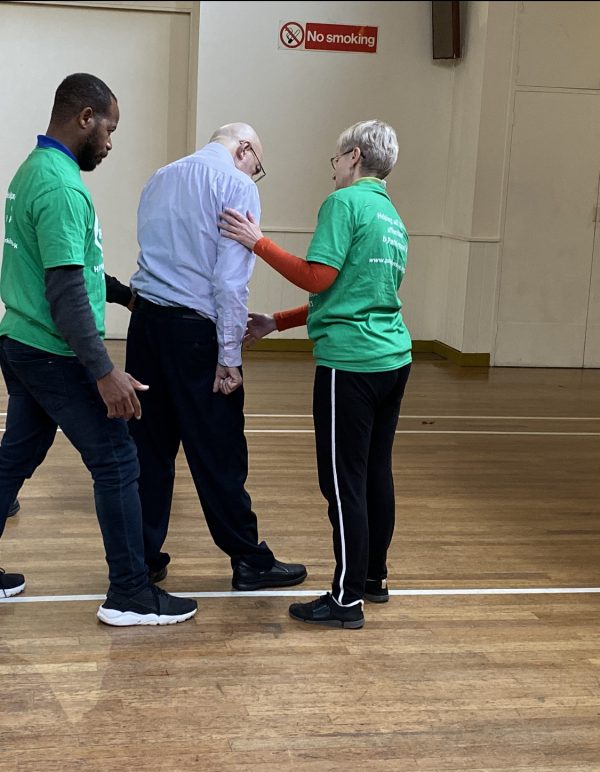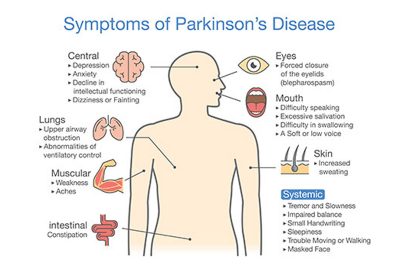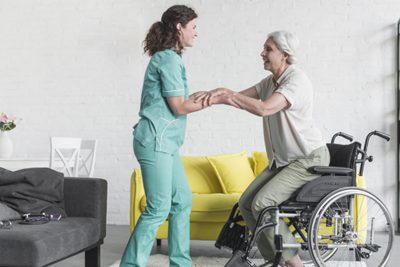Posture in Parkinson’s

It is common for people with Parkinson’s to experience a change in posture and postural instability. People with Parkinson’s often tend to be set forward due with poor posture and have minimal ability get to straighten or shift weight backward without falling. While the exact disease process that causes postural instability is not precisely understood, one theory is that it may be due to damage of noradrenergic neurons, which are the nerve cells that produce the neurotransmitter norepinephrine. It is therefore crucial to be diligent about fighting bad posture from as early as possible.
Parkinson’s affects control of automatic activities, so posture changes may occur without the brain’s automatic reminders to stand up straight. These changes may include stooped or rounded shoulders, decreased low back curve or forward lean of the head or whole body, making you look hunched over. A tendency to bend or flex forward is the most common change in posture seen with Parkinson’s. There can also be a tendency to flex or bend to one side. It is not known why this occurs but there are many factors that can lead to changes in posture.
Muscle rigidity (stiffness) and imbalance of bigger muscles overpowering the smaller muscles can cause you to bend over, brain changes that control posture or dystonia, being in one position for too long, the muscles that flex, or forward bend the spine or hip may become hyperactive.
It is important to try to maintain an upright posture because stooped posture can have other negative effects such as:
- Neck or back pain can occur when natural spine curves are out of alignment.
- Stooped posture reduces your ability to take deep breaths, which impacts your ability to speak clearly and loudly. Stooped posture also reduces eye contact. Combined with other Parkinson’s symptoms like low voice volumeand facial masking, this can have a big impact on your ability to communicate.
- Loss of flexibility from changing posture can make it hard to do many small movements in your day, like raising arms overhead while getting dressed or getting up out of a chair.
- Poor posture can put you off balance and lead to falls.
Strengthening: Due to the fact that the anterior body muscles decrease in flexibility, the opposing back muscles are unable to perform their job of maintaining a straight back and tend to become overstretched. This in turn leads to weakness. Improving the strength of your back musculature will help keep you upright for a longer period of time.
How to Manage and Improve Posture Changes
We recommend that you try some of these strategies to maintain good posture:
- Use a mirror to check posture (both front and side views) throughout the day. It is useful to be mindful of what your posture looks like.
- Be aware of posture changes. Try to catch yourself stooping or leaning forward and take action to make corrections. Ask people to tell you if they notice you stooping.
- Change position often. Take movement breaks!
- Get back (lumbar) or neck (cervical) rolls or cushions for better postural alignment when sitting,sit back against the chair and pull head back- “chin tucks”.Get rid of extra pillows, only use one pillow to support the small of the neck when you sleep.
- Walk tall- always think shoulders back, head up, chest out and lead with your heels.
- Consider taking up Yoga or Tai Chi classes, which can both be very beneficial for posture. Subscribe to our YouTube Channelwhich has lots of free Yoga and Tai Chi exercise videos!
- Why not try Sound Daoyin? This type of therapy not only works to improve your vocal ability but also helps to improve posture. What’s better is that we offer Sound Daoyin for free for people with Parkinson’s.
- See a physiotherapist who can give you specific posture recommendations and exercises.
- Stooped posture makes the muscles in the front of your body less flexible and the muscles in the back of your body weaker. Perform simple posture exercises and stretchesthroughout the day. Stretch Pectoral muscles (the front of the chest), Ilipsoas muscle (front of the hip), Hamstrings (back of the upper leg), Gastrocnemius and Soleus (back of the lower leg).
- We know exercise works! Many studies have shown improvement in balance, confidence, quality of life and reduced fall rates in people with Parkinson’s when they are participating in an exercise program. Whether it’s community or home-based programs, Exercise needs to be a lifelong habit and the benefit fades if exercise stops.




